I’m certainly no stranger to long-exposure photography. But during the few years that we’ve lived in a flat with a balcony and an unobstructed view of the night sky, I’ve come to realise that I’d never photographed the Milky Way properly.
The first time that I can even remember seeing the Milky Way at all was when we were in Arosa in 2012. There’s a small observatory in the mountain village, because of the low levels of light pollution, and I made my first photographic attempt on the mountain there.
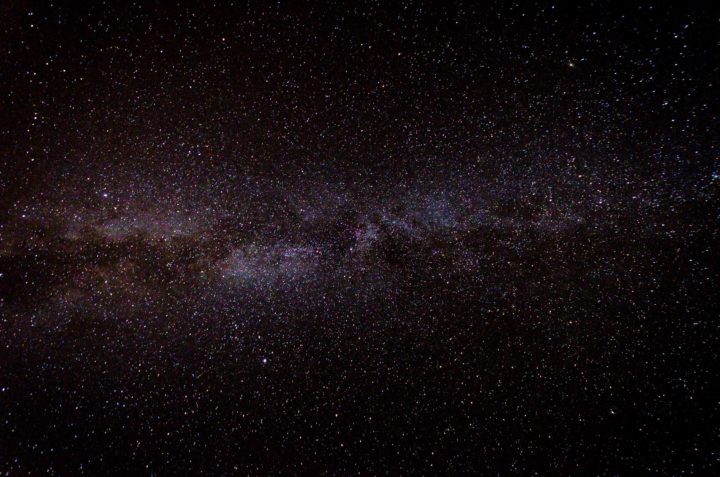
Since living in Faulensee, I’ve noticed the cloud-like grouping of stars from time to time, but it was only this past week when I decided to drive up to Chüematte and make a fresh photographic attempt. The road is a private one and as such, I didn’t meet anyone on the mountain: only cows clanked their bells in the darkness as I set up my tripod and tried different settings and views to get the best results.
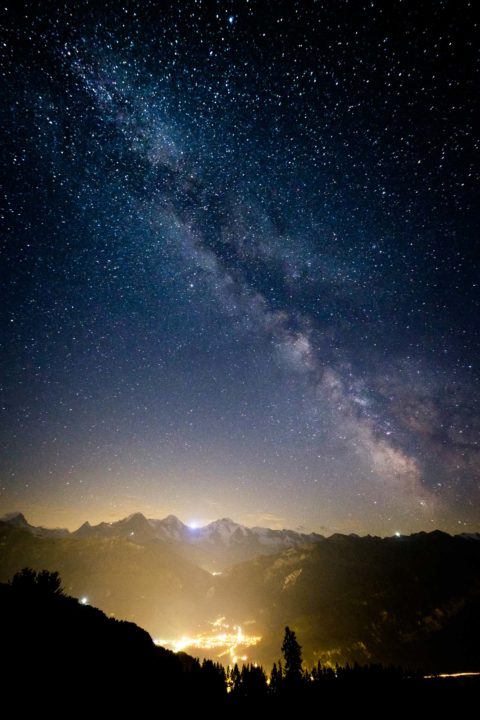
Through trial and error, I found that even the slight level of haziness in the valleys was enough to scatter the comparatively small amount of light coming from Interlaken, which led to there being too much light pollution to get a clean image. I was also surprised to see the effect of the small villages and towns on the far side of the big mountains near Fiesch: the glow from their lights was enough to cast a halo behind the Eiger, Mönch and Jungfrau.
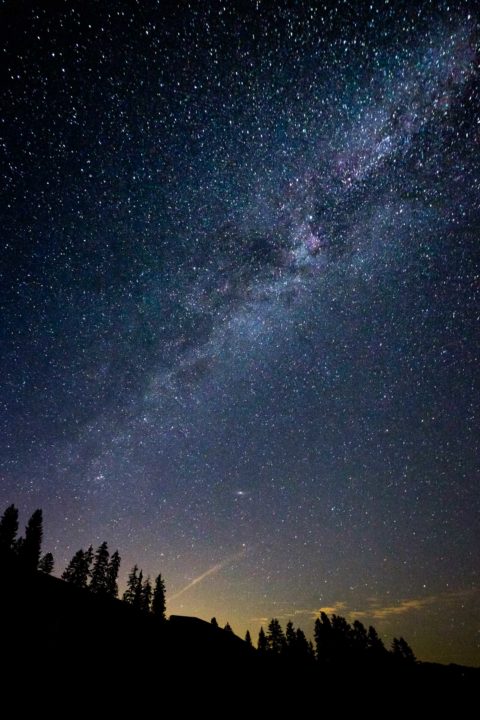
The best results I got that night were from the mountainside looking east, towards Habkern. Only the lights from a single village were shining, which meant that this was where the least light pollution was evident. Because the Milky Way is so large in the sky – stretching from horizon to horizon – I needed to use the widest-angle lens I have to get a sense of scale.
With the lens set at 10mm, I could get the composition I wanted, but the distortion which this lens affords on its outer limits means that the stars in the top part of the picture are blurred: the distortion means that they are, in effect, moving across a larger part of the image than those in the centre.
In order to stop the stars in the main part of the picture as much as possible, I found that an exposure time of up to 30 seconds was the limit, and my maximum aperture with this lens – f4.0 – gave me an ISO limit of 3,200. That means lots of grainy noise, which I could mostly remove in post-processing, but an indicator that any serious astronomical photographer needs to work with a wider aperture such as f1.4 or f1.8, to allow a lower ISO and better image quality.
Despite the technical hindrance and the excessive light pollution, I’m quite pleased with the results. The final shot of the night by the lake at Beatenbucht wasn’t all that successful as a shot of the Milky Way, but I like the reflection of the lights and silhouetted mountain in the water. It was magical to enjoy this view in the absolute silence and solitude of the lake shore at a little after 1 a.m.
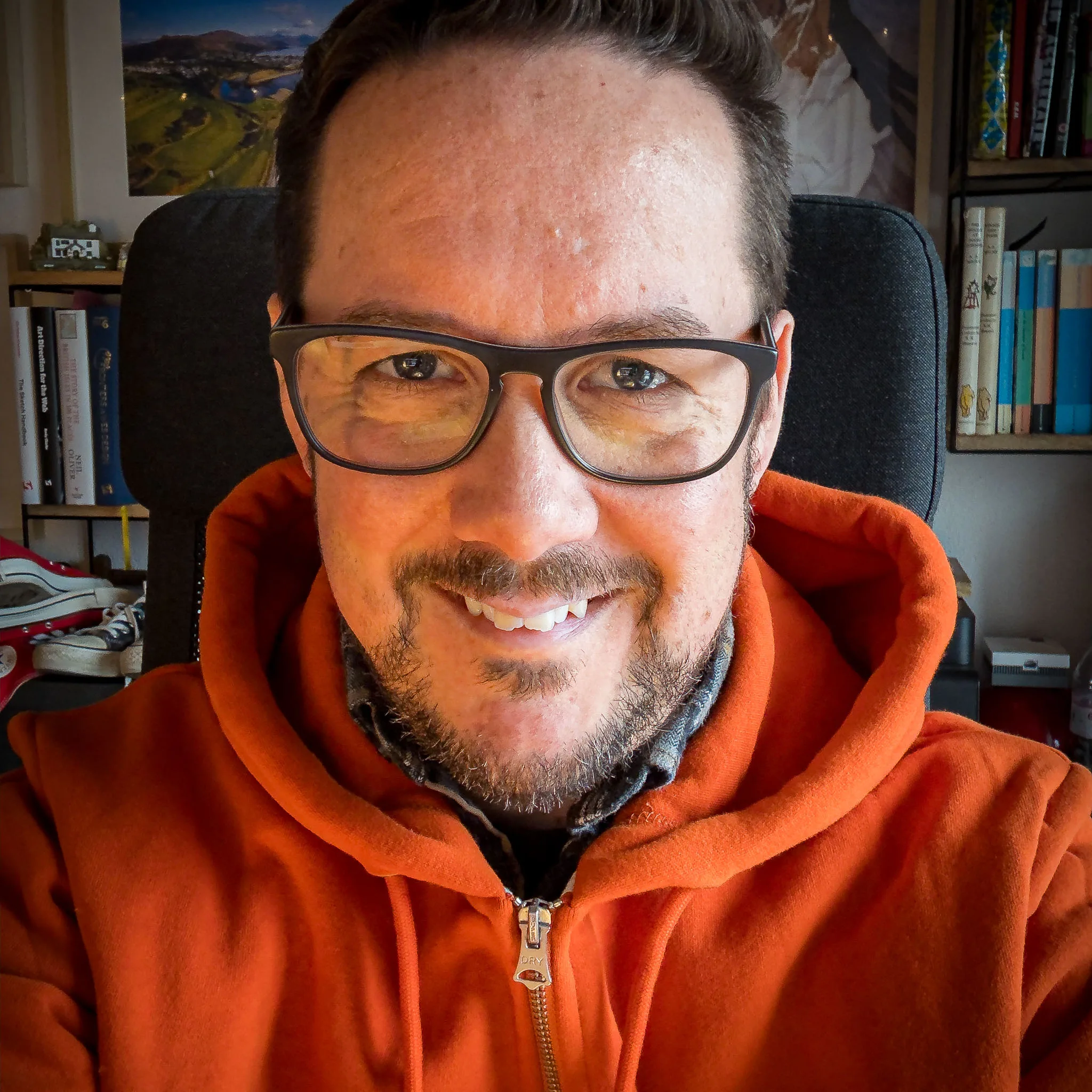
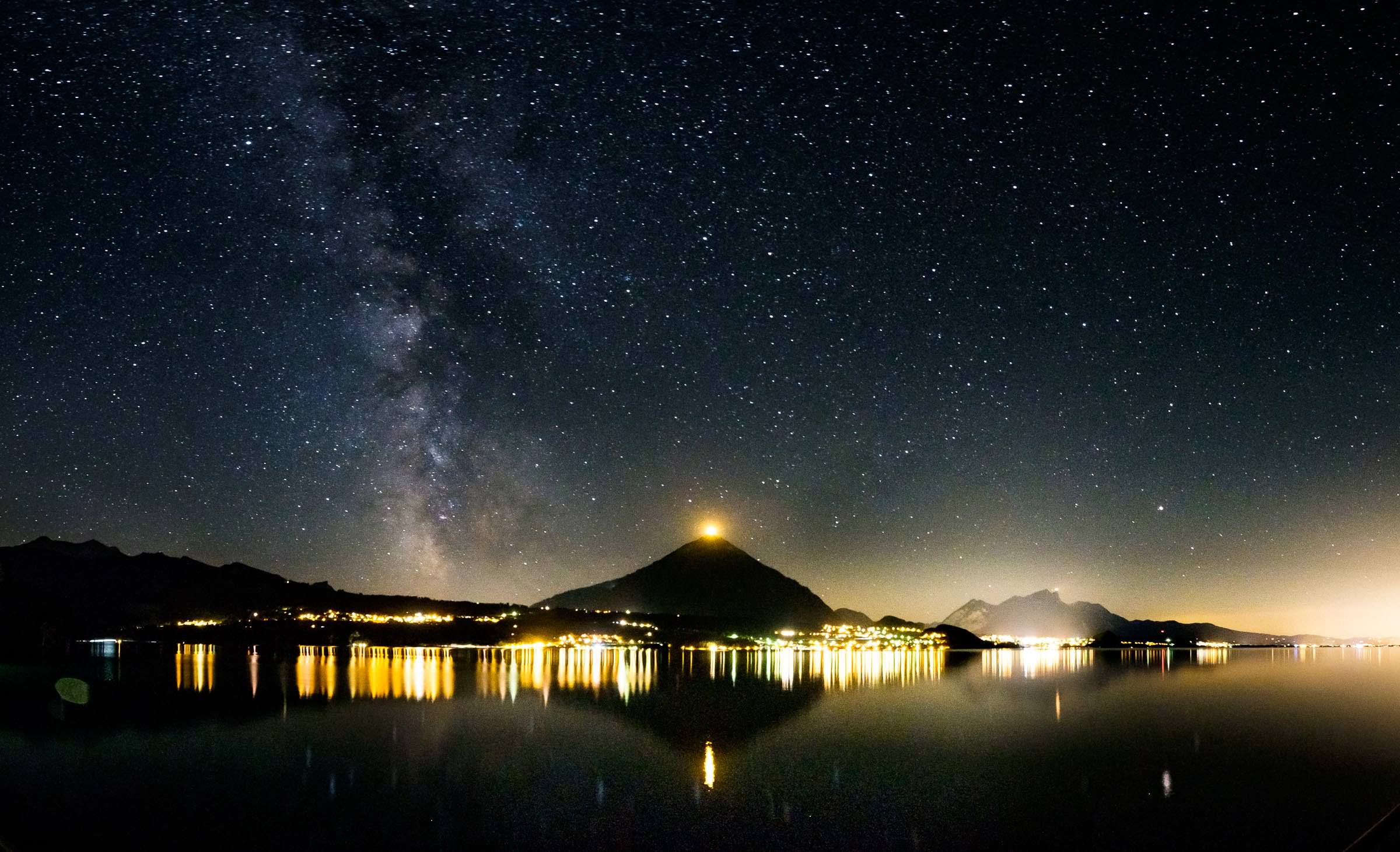
Leave a Reply